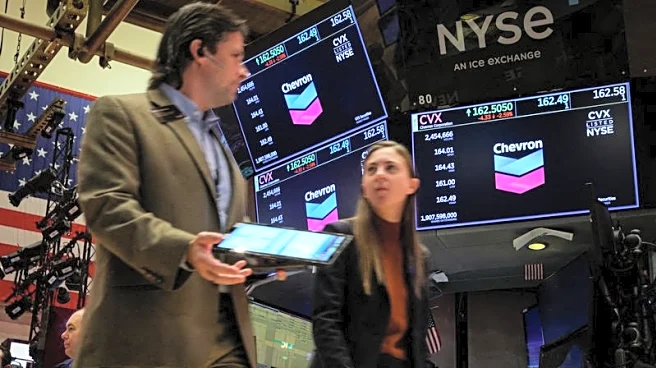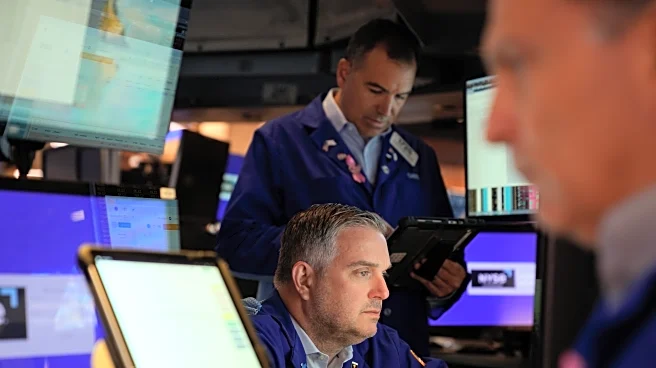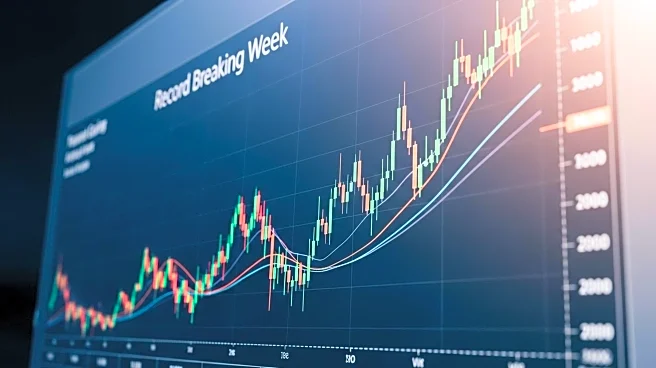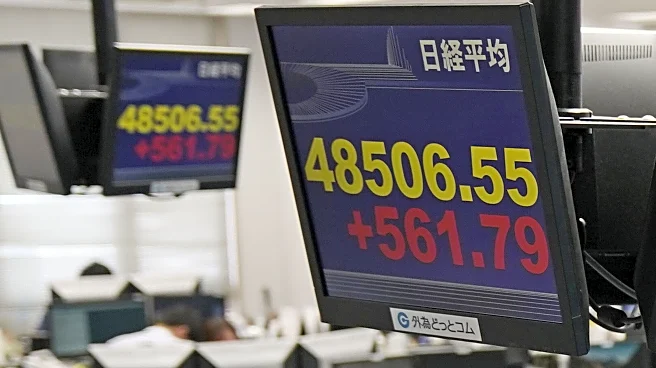What's Happening?
Recent multibillion-dollar investments, such as OpenAI's stake in Advanced Micro Devices (AMD), have prompted Wall Street analysts to draw comparisons to the 2000 Dot-Com Bubble. These deals have resulted in significant stock gains and heightened investor enthusiasm, with stocks continuing to rise despite potential risks. Hedge fund manager Paul Tudor Jones expressed concerns on CNBC's Squawk Box, suggesting that the current situation could be even more volatile than 1999. The concentration of tech companies in the S&P 500, now at 35% compared to 15% in 1999, is also raising alarms about the potential for sharp market fluctuations.
Why It's Important?
The current market dynamics, driven by large tech investments, could have significant implications for the U.S. economy and investors. The concentration of tech stocks in the S&P 500 means that a downturn in these companies could lead to substantial market volatility. This scenario poses risks for investors who may face significant losses if the market corrects. Additionally, the parallels to the Dot-Com Bubble suggest that the market could be overvalued, leading to potential economic repercussions if a correction occurs. Stakeholders, including investors and financial institutions, need to be cautious and consider the potential for a market downturn.
What's Next?
If the current trend continues, stakeholders may need to prepare for potential market corrections. Financial analysts and investors will likely monitor tech stock performance closely, especially given the high concentration in the S&P 500. Any failure in major tech deals could trigger a domino effect, impacting investor confidence and market stability. Policymakers and financial regulators might also consider measures to mitigate risks associated with market concentration and investor exuberance.
Beyond the Headlines
The current situation highlights the broader implications of market concentration and investor behavior. The reliance on a few tech giants for market performance underscores the need for diversification in investment strategies. Additionally, the potential for a market bubble raises questions about the sustainability of current investment practices and the role of regulatory oversight in preventing economic instability.












